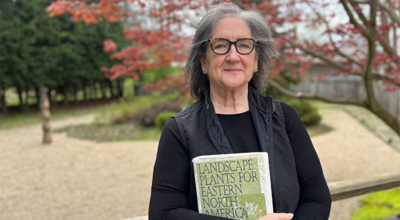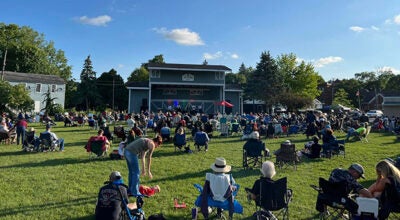Niles bottler made celery soda
Published 8:42 pm Monday, October 1, 2012
The story of Niles Bottling Works starts with celery soda.
It encompasses Ring Lardner, gambling, baseball and men named “Bunny.”
A bottle, uncovered in Buchanan’s McCoy Creek, came from the New Niles Bottling Works, which implied there were two.
Niles Bottling Co. at 216 N. 6th St., manufactured soft drinks under proprietor George W. Wohlford. It is listed in 1927 and 1929 directories, but not 1918-19 or 1920, 1922, 1925 or 1931.
New Niles Bottling Works also made soft drinks, including that celery soda, which was sort of an Indian elixir.
It was owned by Fred A. “Bunny” Marshall and located at 118 E. Main St. It is listed in 1915-16, 1918, 1920 and 1922 Niles directories, but not 1912-13, although Fred and Lois Marshall lived at 118 E. Main St. in 1925 and ’27 volumes.
There is one slender file at Niles District Library containing a two-page oral history reminiscent of “Niles Voices” starting at the library Oct. 1.
Fred “Bunny” Marshall Jr. and his wife, Irma, related this account to Aleta Styers on Aug. 10, 1983.
Marshall and (C.W.) Henry was a lunchroom and pool hall that sold cigars at 118 E. Main.
Gambling was an open and flourishing business in Niles, so long as a sympathetic mayor occupied office.
The lunch room and pool hall was located on the first floor of an opera house between First and Second streets on the south side of Main.
A bottling works was in the basement called Claffy and Connory Co., named for two ball players Marshall hired.
One soda pop made was Kola-Tona, which tasted like celery. It was made from a syrup supplied by a Native American who never divulged the recipe.
When he disappeared and the syrup was no longer available, the bottling business folded.
The saying went that if you had a heart attack and gulped a Kola-Tona, you could jump up and run across the street.
Niles had a baseball team that wore navy uniforms known as the Blues.
Bunny Sr.’s three chief aims were to gamble, have fun and outsmart anyone who tried to outwit him.
George Fink trolled outfield and Lyle Hasfelt played third base, while Bunny Jr. was team mascot. He was 4 years old, so this was around 1911.
Ring Lardner was at the Chicago Tribune. He kept score and jotted funny things the ballplayers said on a note pad balanced on his knee.
The sports columnist, satirist and short story writer incorporated these in “You Know Me Al.” He died in 1933 at 48.
Games were used for bets. One time, the Blues had no pitcher, so Marshall, Dr. Bonine and Mayor Carr, who owned the team, concocted a trick.
Lardner knew a professional player from Cleveland, Guy Morton. The men hired him to come to Niles, impersonating a visitor.
When the two teams met on the field, the visiting nine demanded the Blues forfeit.
“Do you have anyone who can pitch?” they asked. Whereupon the pro stepped forward timidly and said, “I’m not very good, but I’ll try.”
Needless to say, the Blues won a load of money.
The moment the game ended, the ringer was hustled onto the train and whisked from town.
Another time, the trio’s target was Buchanan gamblers. They summoned a runner from Chicago and dispatched him to the Redbud City to get a job and appear he was staying. He raced all of Buchanan’s best.
When the Buchanan gamblers saw a gold mine in the young man, they challenged Niles to a race against anyone it wanted to put up.
Dr. Bonine had been a champion 110-yard sprinter at the University of Michigan.
A great deal of money was wagered. A crowd from near and far assembled.
The race unfolded along the interurban tracks at Superior and Fifth streets.
The runner dashed far ahead of Dr. Bonine, but per the plan, deliberately stumbled and fell just before the finish line. Dr. Bonine went around and won.
The runner jumped up and fled down Fifth to a waiting auto which sped him from town.
About 1924, the gambling part of Marshall and Henry went away with the election of an unsympathetic mayor. The place was remodeled into a regular restaurant that went bankrupt by the spring of 1925.
Marshall left Niles penniless for Sturgis, where a brother had a scissor-sharpening shop. He worked there until his death about 1930.






